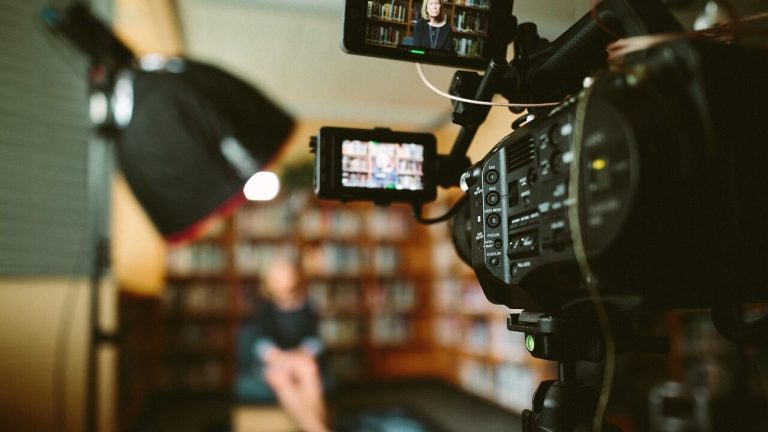Welcome, budding filmmakers and scholars! As a seasoned IB writer with a rich history in the International Baccalaureate environment, I’m excited to share some essential insights into the IB Film course, particularly focusing on the Internal Assessment (IA). Selecting the right topic for your IA can significantly influence your experience and performance in the IB Film SL and HL courses. Today, I will give you some great ideas for Film IA topics you can consider.
What Is the IB Film Internal Assessment?
In my opinion, the IA is crucial in the IB Film curriculum, offering students a unique opportunity to demonstrate their analytical and creative skills. This assignment lets you dig deep into film theory, history, and production.
For SL (Standard Level) students, the IA revolves around a shorter investigative study. It might involve analyzing a specific film or an element of filmmaking, such as cinematography or editing techniques. The focus is developing a concise, well-argued analysis reflecting your understanding of the film medium.
On the other hand, HL (Higher Level) students are expected to engage in a more comprehensive analysis. It could extend to a comparative study of films, in-depth research of a particular genre or movement, or a detailed examination of a filmmaker’s work. According to general IB criteria, understanding these differences is crucial for tailoring your project to meet specific academic expectations.
Here are some components that both SL and HL students should consider when undertaking their Film IA:
- Choose an Internal Assessment topic that interests you and offers sufficient scope for analysis. It could be a particular film, director, or thematic element.
- Conduct thorough research using both primary and secondary sources (films themselves) (books, journals, film criticism).
- Apply analytical frameworks and theories studied in class to dissect and discuss your chosen topic.
- Structure your findings coherently, adhering to the IB’s presentation guidelines. These guidelines often require visual elements such as clips or still images alongside the written analysis.
Also, if you want to earn high scores, I recommend reading the article about common mistakes in IA writing. It contains a wealth of important information that will help you considerably improve your project.
IB Film IA Topics and Research Questions
Below, I’ve outlined Film IA topics and accompanying research questions for SL and HL students, tailored to the scope and depth appropriate for each level.

Standard Level (SL) Film IA Topics
SL courses provide a good foundation in film studies. SL is suitable for those interested in film but may not necessarily wish to pursue film studies or a related field at university. Here are Film IA topics you can consider for this level:
- The Role of Color in “Amélie.” How do vibrant color palettes influence viewer perception in “Amélie”?
- Narrative Structure in “Pulp Fiction.” What narrative techniques does Quentin Tarantino employ in “Pulp Fiction” to create a non-linear storyline?
- Character Development in “The Godfather.” How is Michael Corleone’s transformation portrayed through cinematic techniques in “The Godfather”?
- Sound Design in “A Quiet Place”. How does “A Quiet Place” use sound design to enhance suspense and horror?
- Editing Techniques in “Whiplash.” What role does editing play in building tension during the music performance scenes in “Whiplash”?
- Cinematography in “Moonlight.” How does cinematography contribute to the emotional depth and narrative of “Moonlight?”
- Symbolism in “The Truman Show.” What are the key symbols used in “The Truman Show,” and what do they represent about reality and media?
- Use of Space and Set Design in “Her.” How does the film “Her” use physical space and set design to reflect the protagonist’s emotional states?
- Cultural Representation in “Slumdog Millionaire.” How accurately does “Slumdog Millionaire” represent Indian culture and the issues surrounding poverty?
- Genre Evolution: The Superhero Film. How have superhero films evolved in cinematic style from the early 2000s to today?
- Music’s Impact in Silent Films. What impact does the musical score have on the emotional tone of modern silent films?
- Props and Costuming in “The Great Gatsby” (2013). How do props and costumes contribute to the narrative and themes of decadence in “The Great Gatsby”?
- The Influence of Film Noir on Modern Cinema. How has film noir influenced the visual style and themes of contemporary films?
- Special Effects in “Jurassic Park.” How did the special effects in “Jurassic Park” revolutionize viewer expectations of visual effects in cinema?
- The Role of Women in Action Films. How has the role of women in action films changed over the past decade?
- The Ethical Implications of Documentary Filmmaking on Real-life Subjects. How do documentary filmmakers overcome ethical challenges when depicting real-life events and individuals?
- The Evolution and Impact of Computer-generated Imagery in Animated Films. How has introducing advanced CGI technologies transformed storytelling in animated films over the past two decades?
- Voice-Over Narration in Enhancing Narrative Depth in Modern Cinema. In what ways does voice-over narration contribute to or detract from the viewer’s understanding and engagement with the film’s plot?
- Analysis of Streaming Services’ Influence on Contemporary Film Production. What significant changes in film production and distribution have the rise of streaming services like Netflix and Amazon Prime brought about?
- The Recurrence of Character Archetypes in Modern Disney Films. How do recurring character archetypes in Disney films contribute to the company’s narrative formula, and how does this impact audience reception?
- The Role of Science Fiction Films in Mirroring Contemporary Issues. How do science fiction films use futuristic and speculative settings to reflect and critique current societal concerns and fears?
- Innovative Techniques in Documentary Filmmaking Addressing Social and Political Issues. What innovative techniques are documentary filmmakers using to engage and persuade audiences on social and political issues?
- Memorable Villains in Action and Thriller Cinema. How do filmmakers use visual and narrative techniques to create memorable villains in action and thriller genres, and how do these characters resonate with audiences?
- The Transformation of the Romantic Comedy. How have romantic comedies evolved to reflect changing societal attitudes toward relationships and gender roles?
- Using Sound Design to Build Atmosphere and Tension in Horror Films. How is sound design used strategically in horror films to enhance tension and atmosphere, and what are some notable examples of this practice?
These topics and questions can guide IB Film SL students in producing detailed and insightful analyses for their Internal Assessments.
Buy IB IA with Full Confidentiality!
Grab your IB IA with full privacy guaranteed.
Our no-leak policy keeps your details 100% secure.

Higher Level (HL) Film IA Topics
HL courses are more rigorous and intended for students considering further education or a career in film, media studies, or related fields. HL students engage with more complex theories:
- Auteur Theory: The Films of Wes Anderson. How do recurring motifs in Wes Anderson’s films qualify him as an auteur?
- Globalization and its Impact on National Cinemas. How has globalization affected the representation of cultural identity in national cinemas?
- The Evolution of the Horror Genre. How has the horror genre evolved to reflect societal fears over time?
- Postmodernism in “Blade Runner 2049.” How does “Blade Runner 2049” incorporate elements of postmodernism to reflect on humanity and technology?
- Feminist Film Theory: Representation in “Mad Max: Fury Road.” How does “Mad Max: Fury Road” challenge traditional gender roles through its characters and narrative?
- The Psychological Impact of One-Shot Films. How do films shot in a single continuous take, like “1917,” affect the psychological engagement of the audience?
- Comparative Study of Biopics. How do different biopics about the same figure vary in their portrayal, and what does this say about the filmmaker’s perspective?
- The Use of Allegory in Dystopian Films. What political or social allegories are present in the film “Snowpiercer”?
- Digital vs. Celluloid in Film Production. How has the shift from celluloid to digital impacted the visual aesthetics of mainstream cinema?
- The Influence of French New Wave on American Independent Cinema. In what ways did the French New Wave influence American independent filmmakers?
- Cross-Cultural Film Remakes. How do remakes of foreign films differ in cultural context when adapted for a Hollywood audience?
- The Representation of AI in Science Fiction Cinema. How has the representation of artificial intelligence in cinema changed from the 1980s to the present?
- Cinema Verité and Modern Documentary Techniques. How has the cinema verité movement influenced contemporary documentary filmmaking practices?
- Neo-Noir and Contemporary Urban Landscapes. How do neo-noir films use urban landscapes to reflect themes of alienation and moral ambiguity?
- Interactivity and the Viewer in Modern Cinema. How do interactive films like “Bandersnatch” challenge traditional narratives and viewer engagement?
- Inter-Textual References and Narrative Complexity in “The Matrix.” How does “The Matrix” use inter-textual references to philosophical and religious texts to deepen its thematic complexity and narrative layers?
- Deconstruction of the Hero’s Path in Modern Cinema. How do contemporary films deconstruct the traditional hero’s path archetype?
- Ethical Implications of Documentary Filmmaking. What ethical considerations must filmmakers address when producing documentaries about vulnerable populations?
- Italian Neorealism: Its Influence on Modern Independent and Art House Cinema. In what ways has Italian Neorealism influenced contemporary independent and art house films in terms of narrative and aesthetic approaches?
- Mental Health Depictions in the Thriller Genre: A Tool for Narrative Complexity. How are mental health issues portrayed in the thriller genre, and what implications does this portrayal have for narrative development and audience perception?
- Alfred Hitchcock’s Cinematic Techniques and Their Impact on the Thriller Genre. What innovative cinematic techniques did Alfred Hitchcock introduce, and how have these techniques continued to influence the thriller genre today?
- Narrative Complexity and Multi-linear Storytelling in “Cloud Atlas”. How does “Cloud Atlas” manage its multi-linear narrative structure, and what does this complex form reveal about the potential for storytelling in cinema?
- Using Political Satire in Film to Critique Government and Military Institutions. How do films like “Dr. Strangelove” employ satire to critique and comment on government and military practices?
- The Evolution of the Romantic Comedy Genre in the 21st Century. How has the romantic comedy genre changed in the 21st century, especially in representing diverse relationships and social issues?
- The Role of Soundscapes in Creating Immersive Environments in Horror Films. How do contemporary horror films use soundscapes to create immersive and unsettling environments for the audience?
Remember that HL students undertake more detailed studies of film texts, often including a broader and more diverse range of films. These include specific genres, national or regional cinema, auteur studies, and advanced film theory.
Conclusion
So, choose a topic that aligns with your personal and academic interests and use available resources. Remember, your IA is a chance to shine and demonstrate your passion for film.
Why wait? Start brainstorming and researching your Film IA topics today. This approach will ensure you have plenty of time to refine your ideas and produce a work you can be genuinely proud of. Plus, our IB experts are always ready to help you write an Internal Assessment.

Nick Radlinsky
Nick Radlinsky is a passionate educator, marketer, and management expert with over 15 years of experience in the education sector. After graduating from business school in 2016, Nick embarked on a journey to earn his PhD, fueled by his dedication to making education better for students everywhere. His extensive experience, beginning in 2008, has made him a trusted authority in the field.
Nick's groundbreaking article, published in Routledge's "Entrepreneurship in Central and Eastern Europe: Development through Internationalization," showcases his keen insights and commitment to improving the educational landscape. Guided by his motto, "Make education better," Nick's mission is to simplify students' lives and promote efficiency in learning. His innovative ideas and leadership have helped transform countless educational experiences, setting him apart as a true pioneer in his field.




